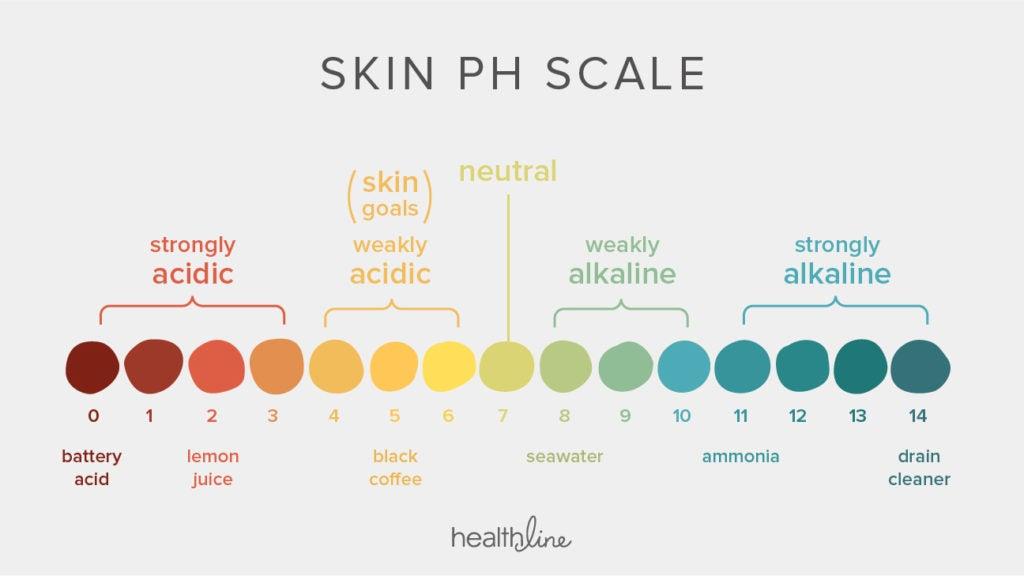In the intricate world of skincare, where the promise of radiant skin often seems just a product away, one crucial element remains shrouded in mystery for many: pH balance. Imagine your skin as a delicate ecosystem, a finely tuned orchestra where each instrument must play in harmony to create a symphony of health and vitality. At the heart of this symphony lies pH balance, a subtle yet powerful conductor that influences everything from moisture retention to barrier protection. Understanding pH balance is akin to unlocking a secret code, revealing how to nourish and protect your skin in a way that resonates with its natural rhythm. In this article, we delve into the science behind pH balance, unraveling its mysteries and exploring its profound impact on skincare, empowering you to make informed choices that harmonize with your skin’s unique needs.
Decoding the Science Behind pH Levels in Your Skincare Routine
In the intricate world of skincare, the term pH balance frequently emerges, yet it often remains shrouded in mystery for many. At its core, pH is a scale that measures how acidic or alkaline a substance is, ranging from 0 to 14. For our skin, which naturally leans towards the acidic side with a pH of around 4.5 to 5.5, maintaining this delicate balance is crucial. An imbalance can lead to a myriad of skin issues, from dryness and irritation to excessive oiliness and acne. This is where the importance of selecting the right skincare products comes into play.
- Acidic Products (pH 0-6): These can help in exfoliation and are often used in treatments for acne-prone skin.
- Neutral Products (pH 7): Rare in skincare, but often seen in cleansing products that aim to be gentle on the skin.
- Alkaline Products (pH 8-14): Typically found in soaps and cleansers, which can strip away natural oils and disrupt the skin’s barrier.
Understanding the pH levels of your skincare products can empower you to make informed choices that align with your skin’s natural environment. This not only helps in preventing adverse reactions but also enhances the efficacy of the products, paving the way for a healthier, more radiant complexion.

The Impact of pH Imbalance on Skin Health and Appearance
Our skin is a complex ecosystem, where balance is key. When the skin’s pH levels are disrupted, it can lead to a host of issues that affect both health and appearance. A high pH level can strip the skin of its natural oils, resulting in dryness and irritation. On the other hand, a low pH level might foster an environment where bacteria thrive, potentially leading to acne and inflammation. Striking the right pH balance is crucial for maintaining a healthy skin barrier, which acts as a shield against external aggressors.
Recognizing the signs of pH imbalance can help you make informed skincare choices. Watch out for:
- Increased sensitivity: Your skin may react more to products or environmental changes.
- Excessive oiliness or dryness: Imbalance can tip your skin towards extremes.
- Breakouts and redness: These can be indicators of an unhappy skin barrier.
By using pH-balanced products, you can help restore your skin’s equilibrium, enhancing its natural glow and resilience.

Choosing pH-Appropriate Products for Optimal Skin Harmony
When selecting skincare products, one of the most critical factors to consider is the pH level. The skin’s natural pH typically ranges from 4.5 to 5.5, which is slightly acidic. This acidity helps maintain the skin’s barrier function, protecting it from bacteria, allergens, and other potential irritants. Using products that match this natural pH range can help preserve the skin’s delicate balance, leading to a healthier complexion. Choosing the right pH-balanced products can prevent common skin issues such as dryness, irritation, and breakouts.
- Acidic products (pH 3-4): Ideal for exfoliation, these products can help remove dead skin cells and promote cell turnover.
- Neutral products (pH 5-7): Best suited for cleansing, they can help maintain the skin’s natural barrier without causing irritation.
- Alkaline products (pH 8-9): Often used in soaps, these can strip the skin of its natural oils, so they should be used sparingly.
Understanding the pH level of your skincare products is essential for achieving optimal skin harmony. By selecting items that align with your skin’s natural chemistry, you can foster a balanced, vibrant, and resilient complexion.

Expert Tips for Maintaining pH Balance in Daily Skincare Practices
Maintaining the delicate pH balance of your skin is a cornerstone of effective skincare. Here are some expert tips to help you navigate this essential aspect of your daily routine. Start by choosing products that are pH-balanced, ideally between 4.5 and 6.5, which aligns closely with the skin’s natural pH. This helps to preserve the acid mantle, a protective barrier that wards off bacteria and environmental stressors.
- Avoid Over-Cleansing: Excessive washing can strip your skin of its natural oils, disrupting the pH balance. Opt for gentle cleansers that respect your skin’s natural state.
- Be Mindful of Exfoliants: While exfoliating is beneficial, overuse of acidic products can tilt your skin’s pH towards the acidic end, causing irritation. Use them sparingly and follow up with a neutralizing toner.
- Incorporate pH-Balancing Toners: A good toner can help restore balance after cleansing, setting the stage for effective absorption of serums and moisturizers.
remember to listen to your skin. If you notice redness, dryness, or irritation, it might be time to reassess your product choices and make adjustments to restore harmony. By being attentive and informed, you can keep your skin healthy and resilient.































